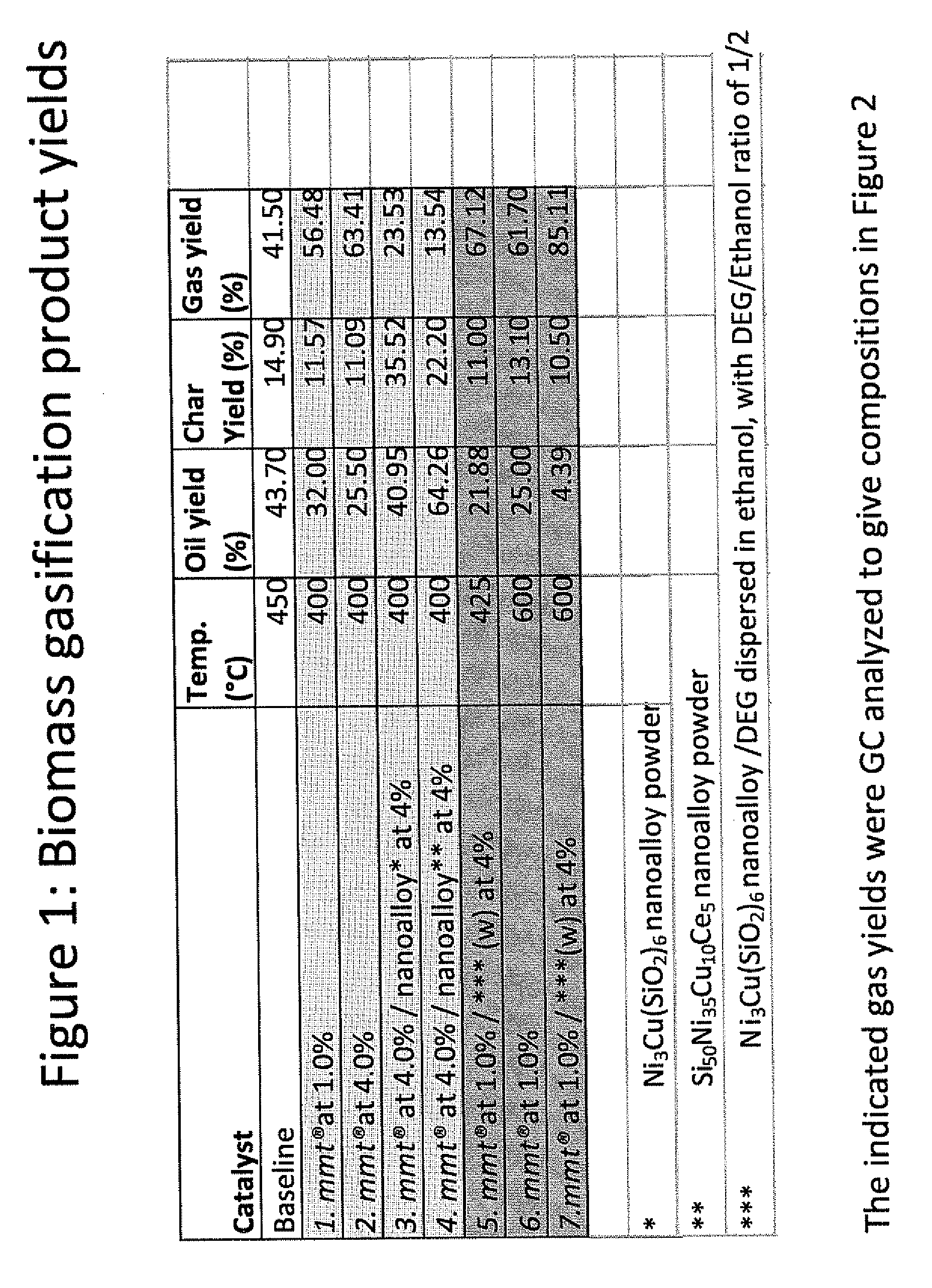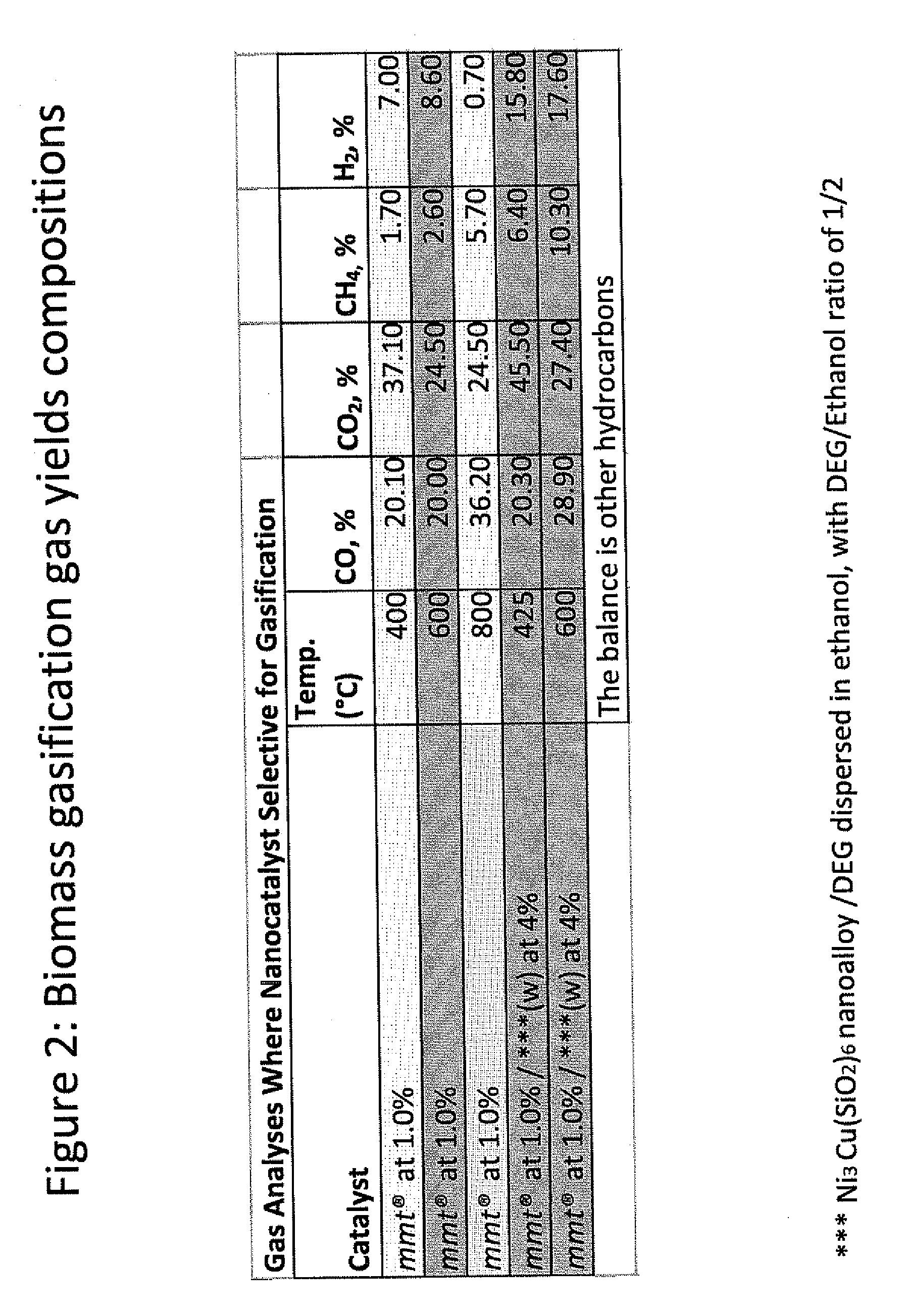Nanoparticle Catalyst Compounds and/or Volatile Organometallic Compounds and Method of Using the Same for Biomass Gasification
- Summary
- Abstract
- Description
- Claims
- Application Information
AI Technical Summary
Benefits of technology
Problems solved by technology
Method used
Image
Examples
Embodiment Construction
[0031]In further detail, the applied nanoalloy catalyst or dual catalyst and related methods provide improved biomass gasification. As noted above, the disclosure provides a means to increase gas or liquid yields, as desired, and reduce solid / char product. The term “gasification” here includes slow or fast pyrolysis / gasification, in the absence or presence of oxygen, and / or in the absence or presence of steam, whereby the pyrolysis / gasification process is carried out sequentially, or simultaneously. The improved liquid and / or gas yields occur at lower biomass gasification temperatures than conventionally used.
[0032]The dual catalyst comprises a volatile organometallic compound and a nanoalloy catalyst / nanocatalyst for improved gasification of biomass including higher gas yields, reduced solid yields, and reduced liquid yields. In one embodiment, it is also possible to use the nanoalloy catalyst and / or dual catalyst disclosed herein to produce higher oil yields where the oil is stabl...
PUM
| Property | Measurement | Unit |
|---|---|---|
| Temperature | aaaaa | aaaaa |
| Viscosity | aaaaa | aaaaa |
| Solubility (mass) | aaaaa | aaaaa |
Abstract
Description
Claims
Application Information
 Login to View More
Login to View More - R&D
- Intellectual Property
- Life Sciences
- Materials
- Tech Scout
- Unparalleled Data Quality
- Higher Quality Content
- 60% Fewer Hallucinations
Browse by: Latest US Patents, China's latest patents, Technical Efficacy Thesaurus, Application Domain, Technology Topic, Popular Technical Reports.
© 2025 PatSnap. All rights reserved.Legal|Privacy policy|Modern Slavery Act Transparency Statement|Sitemap|About US| Contact US: help@patsnap.com


